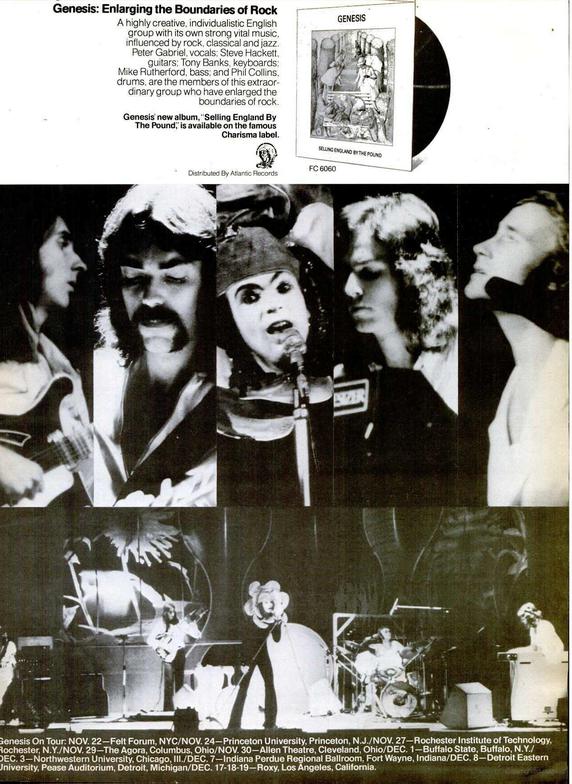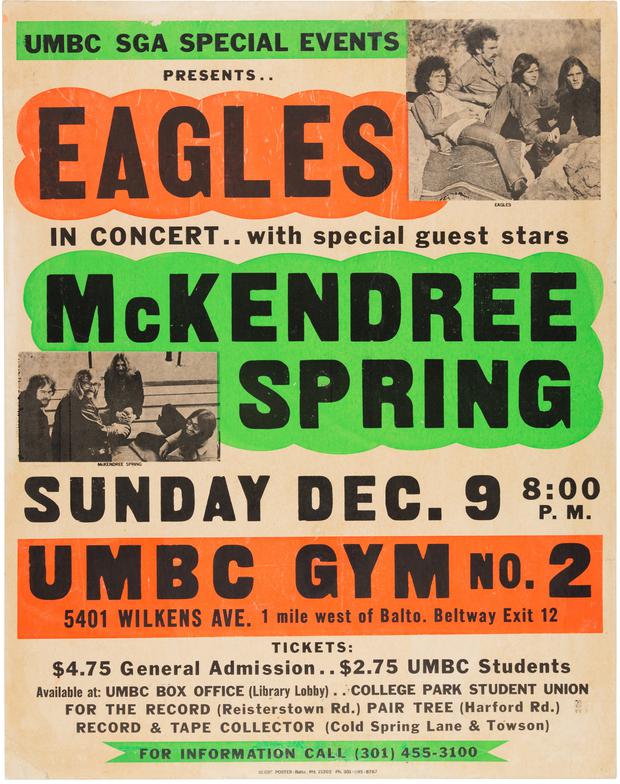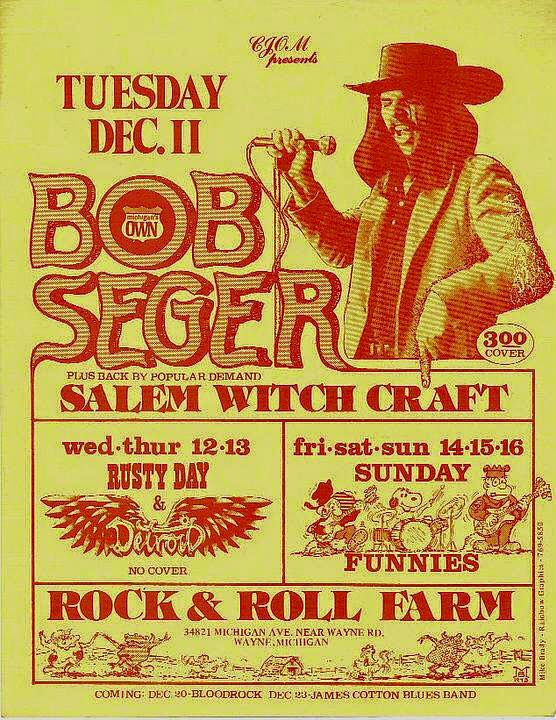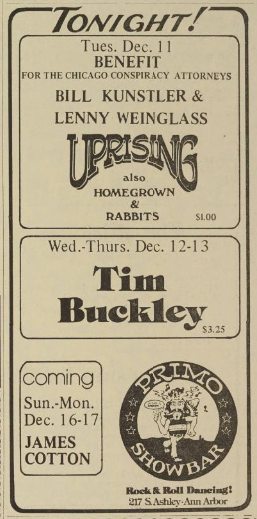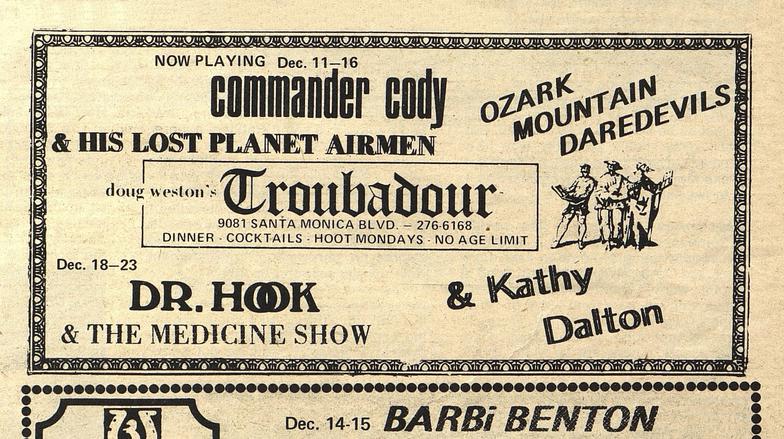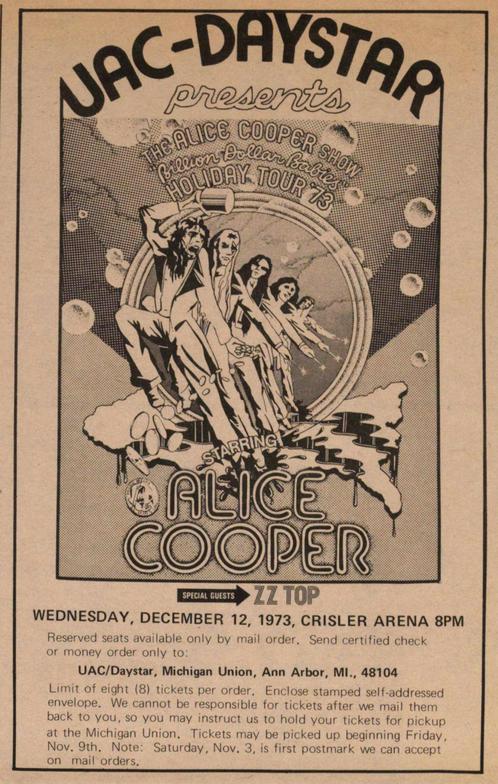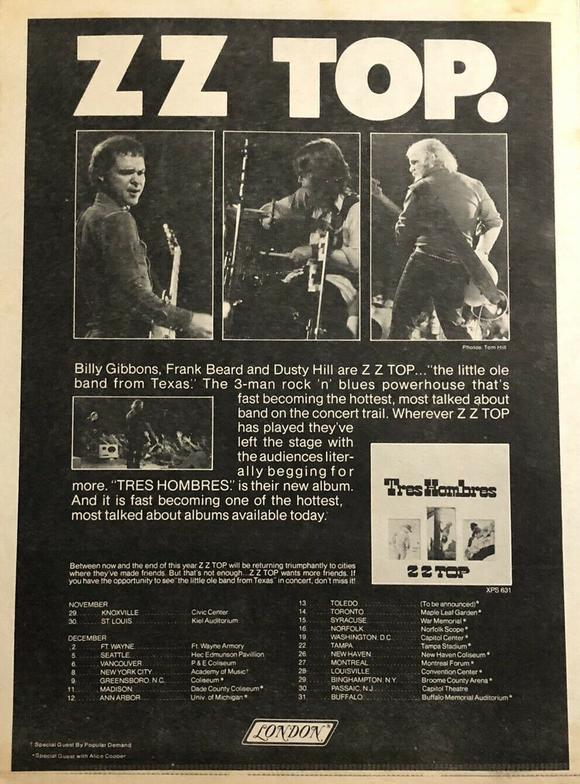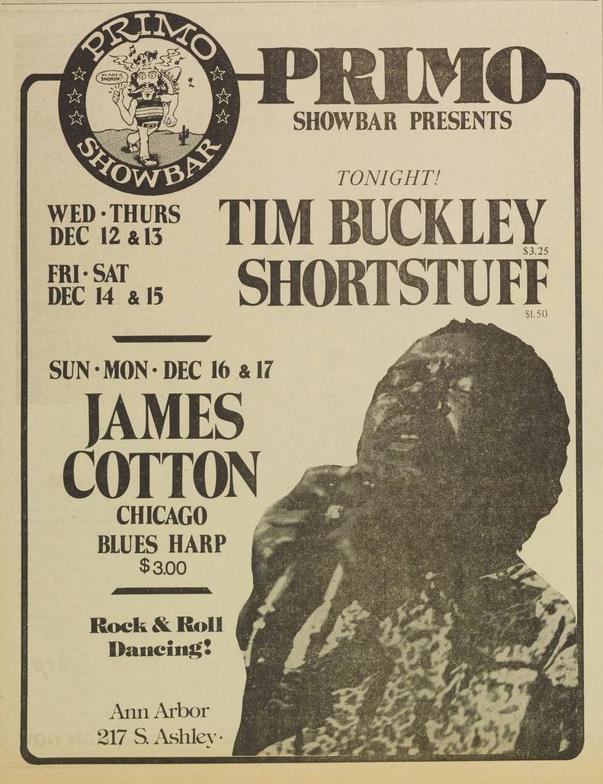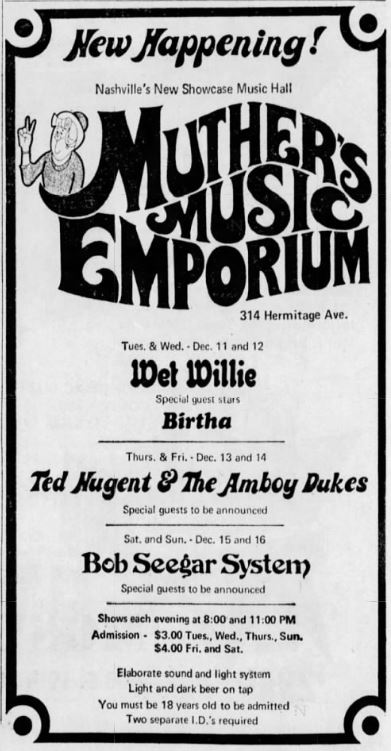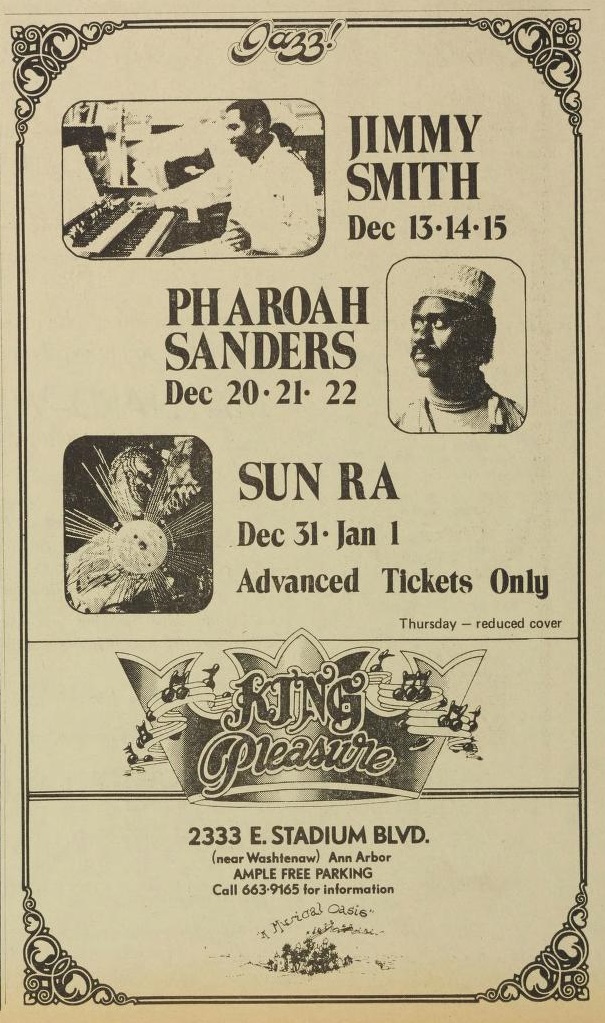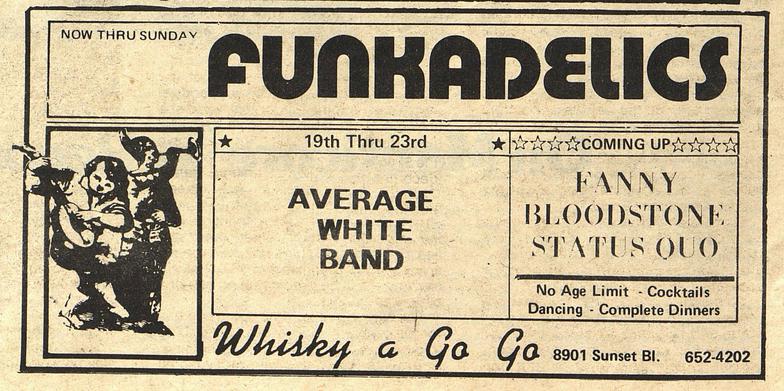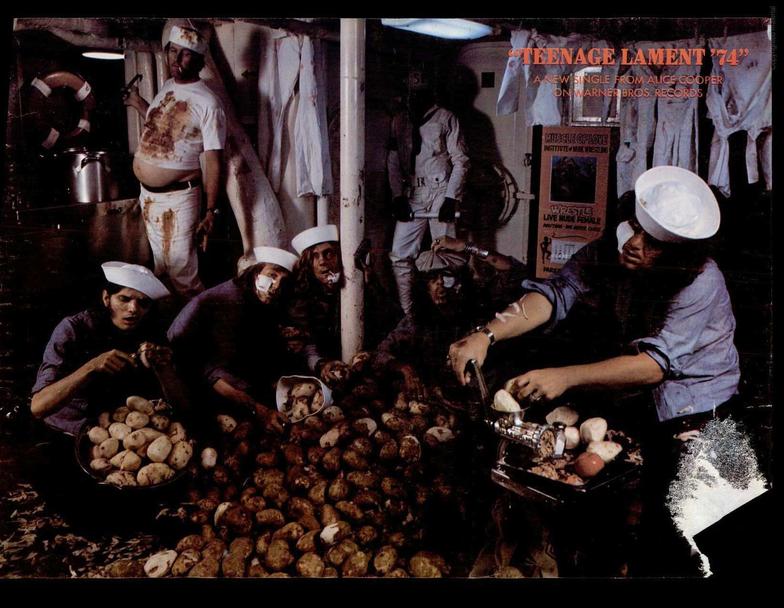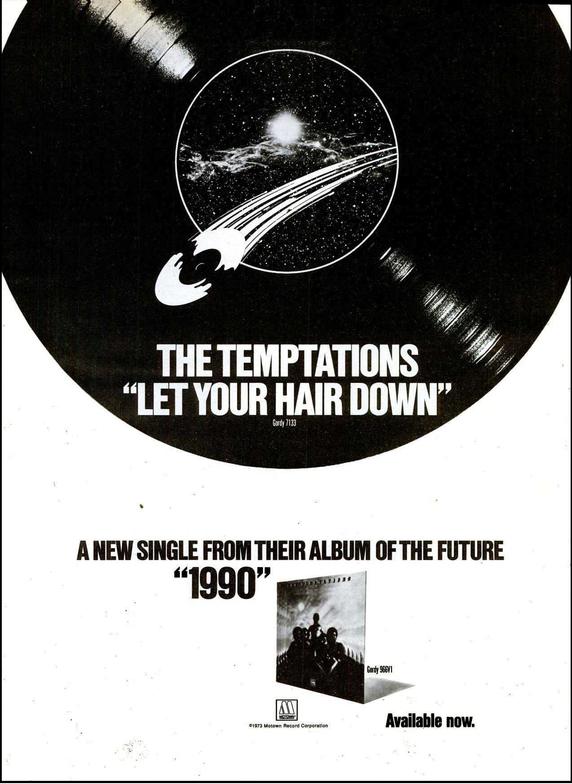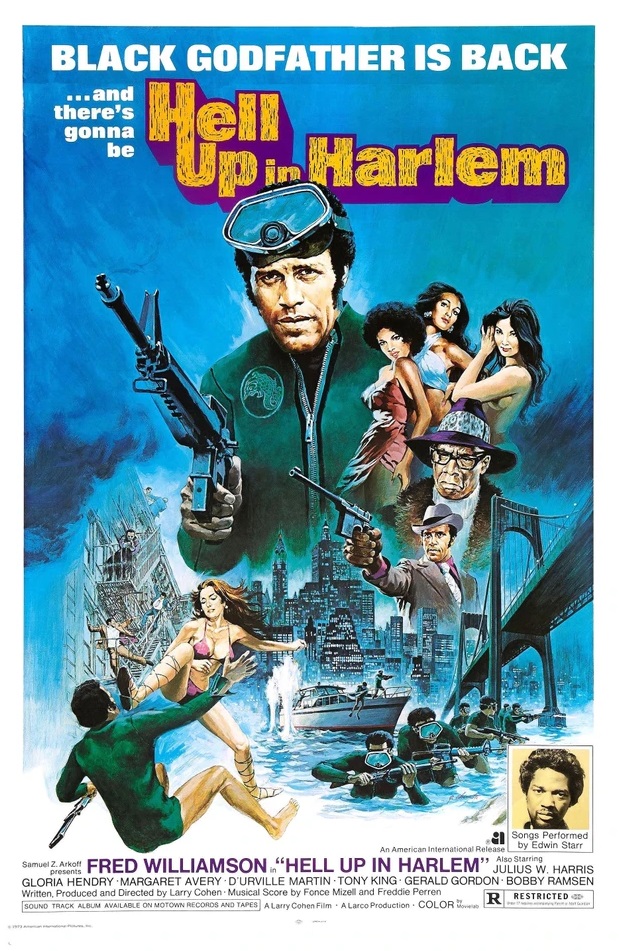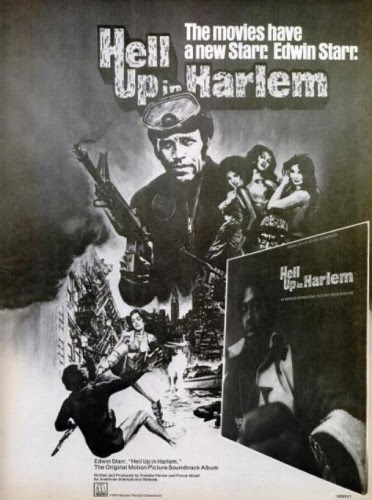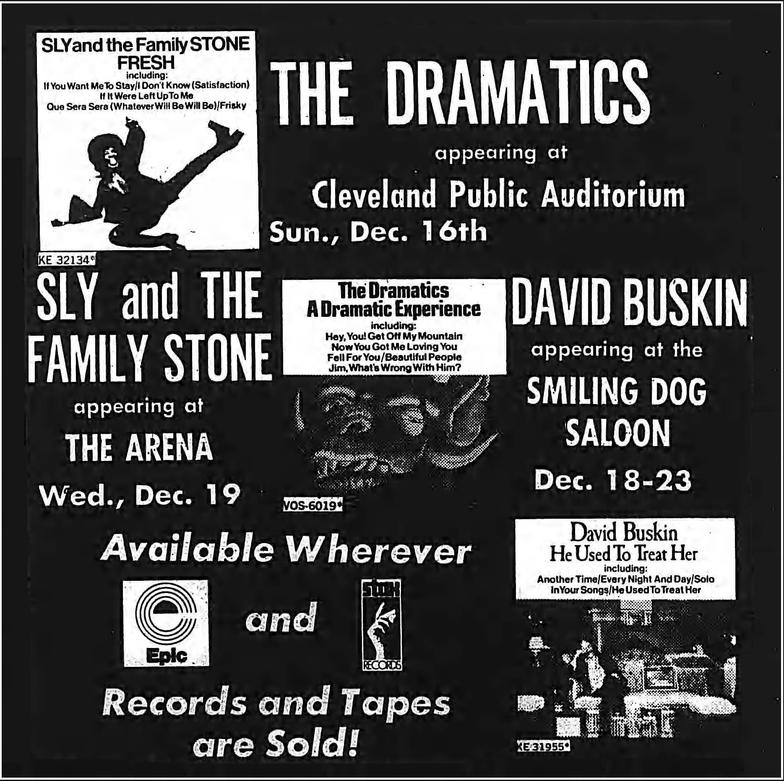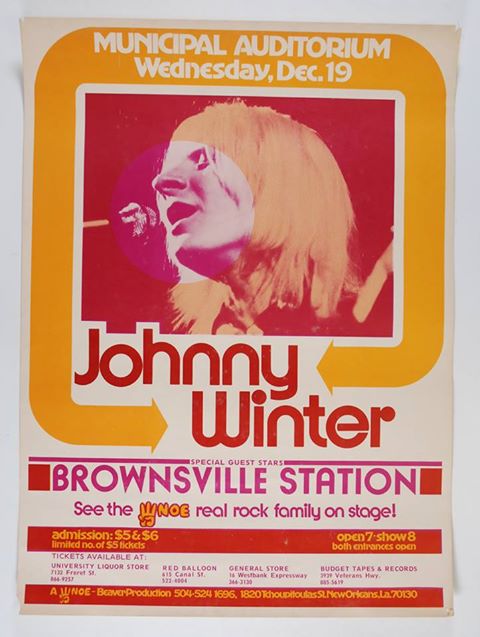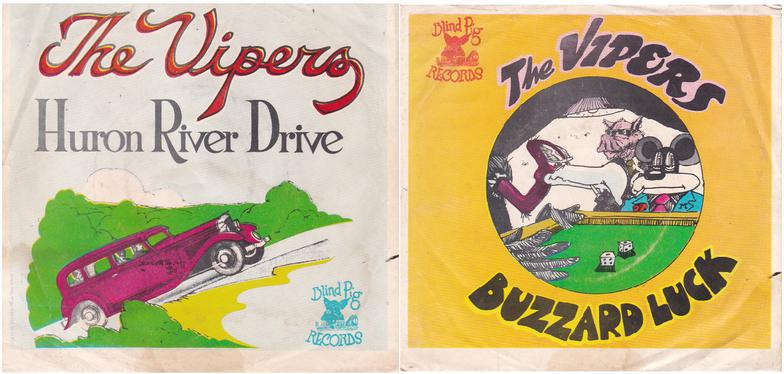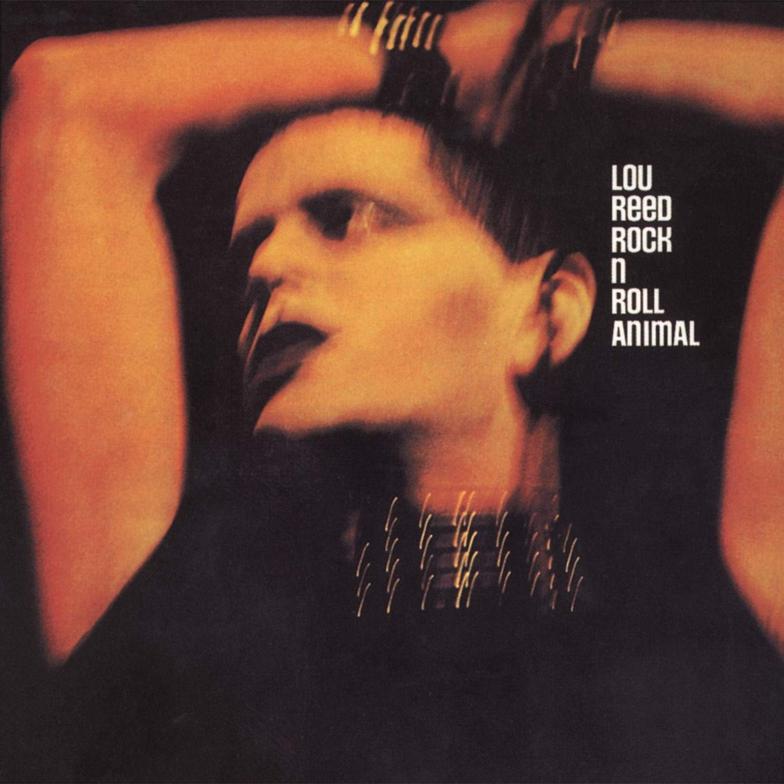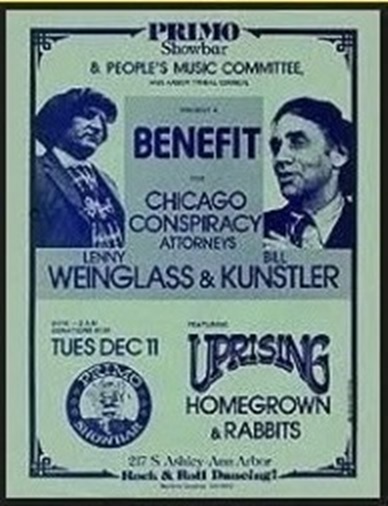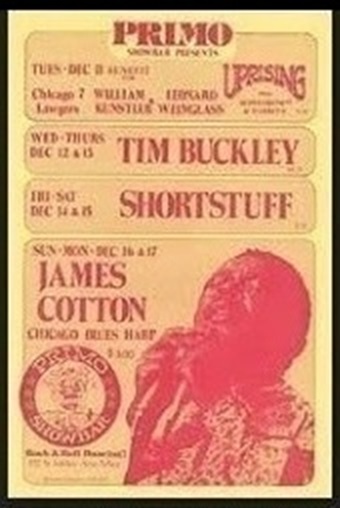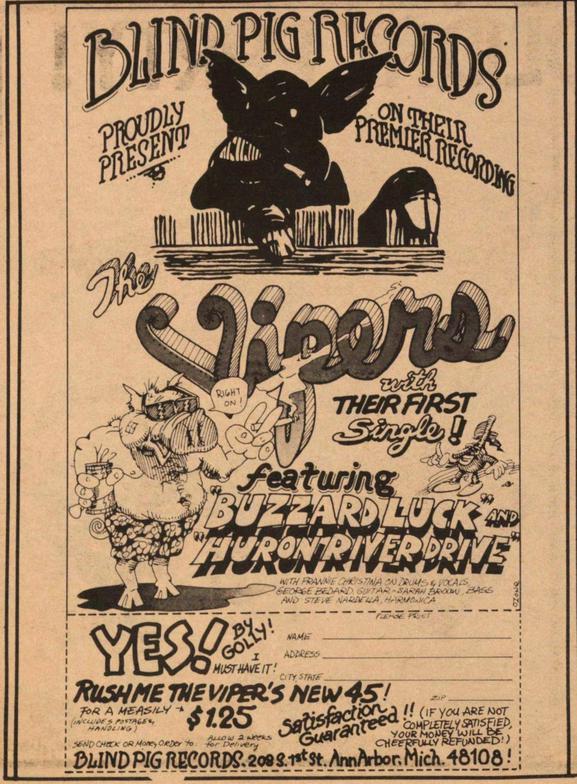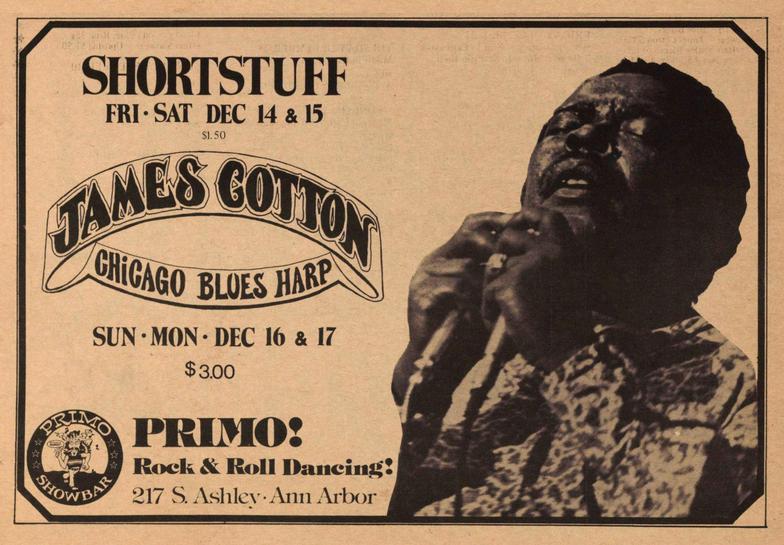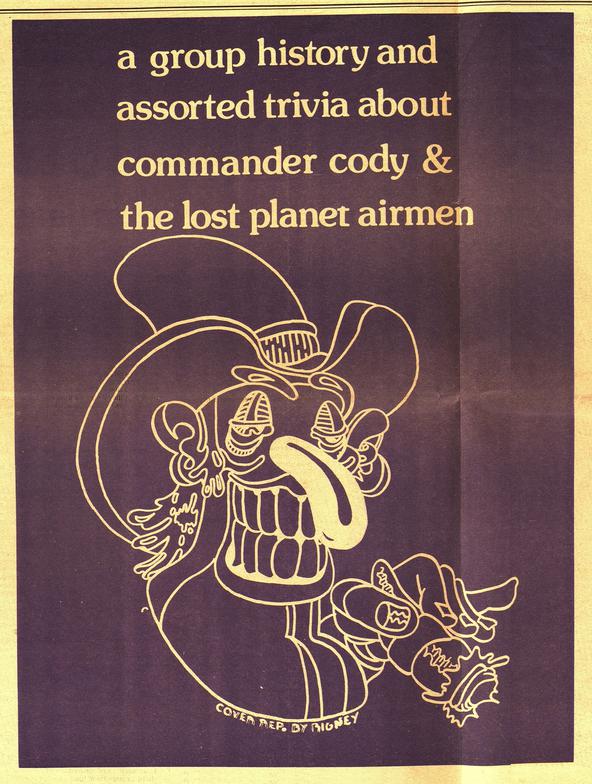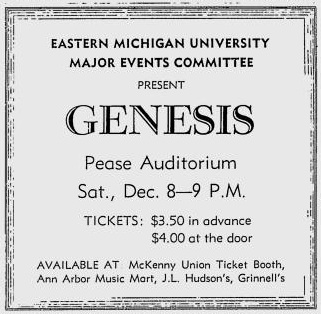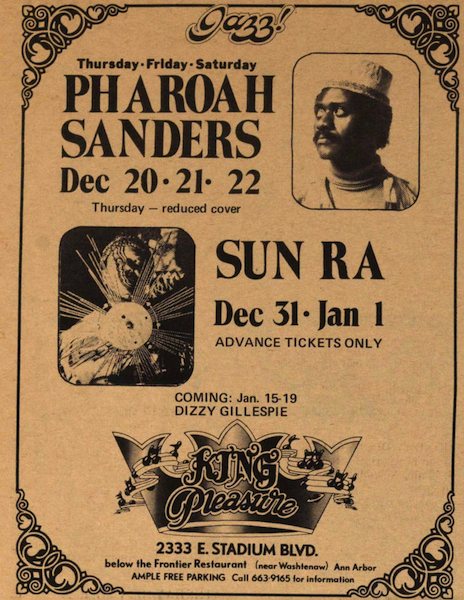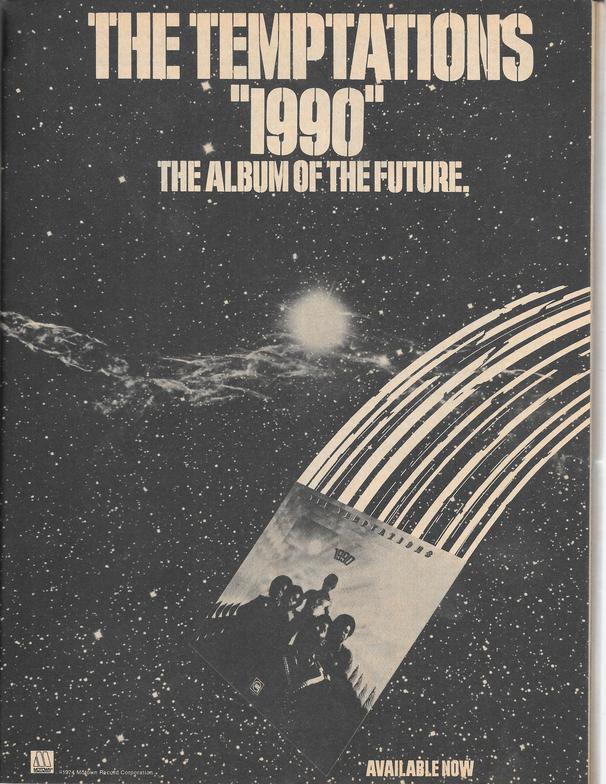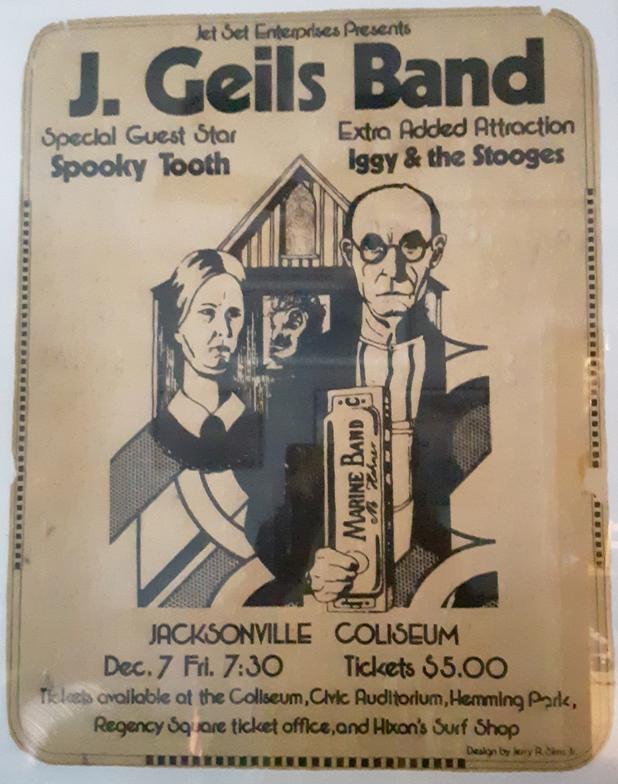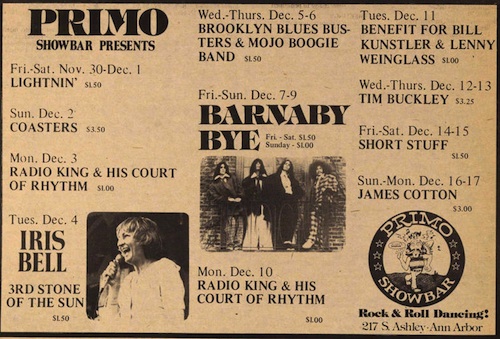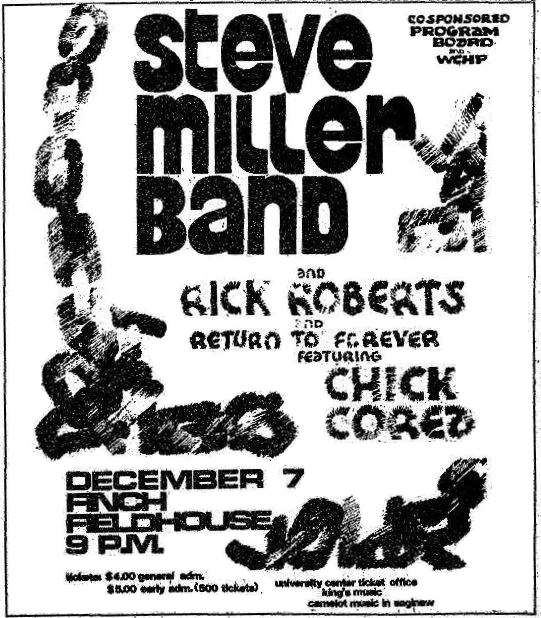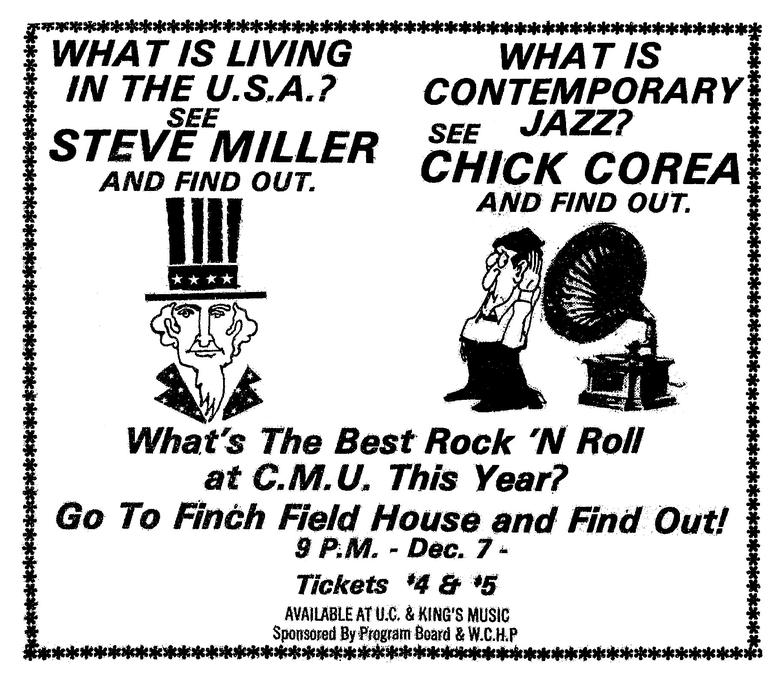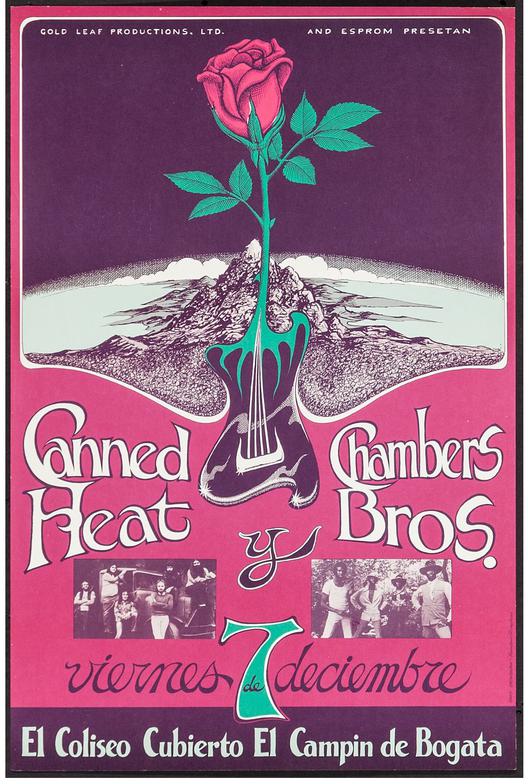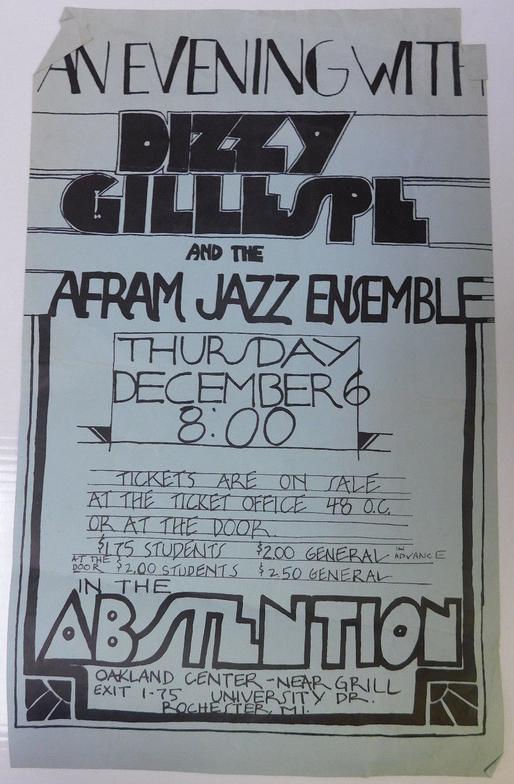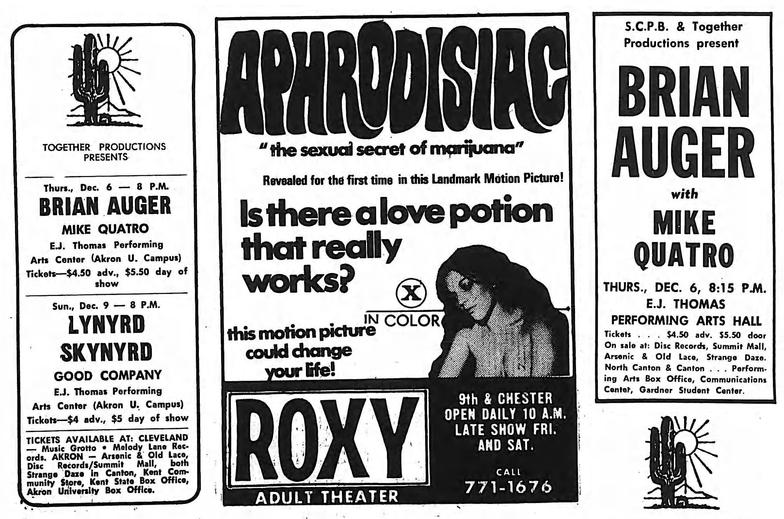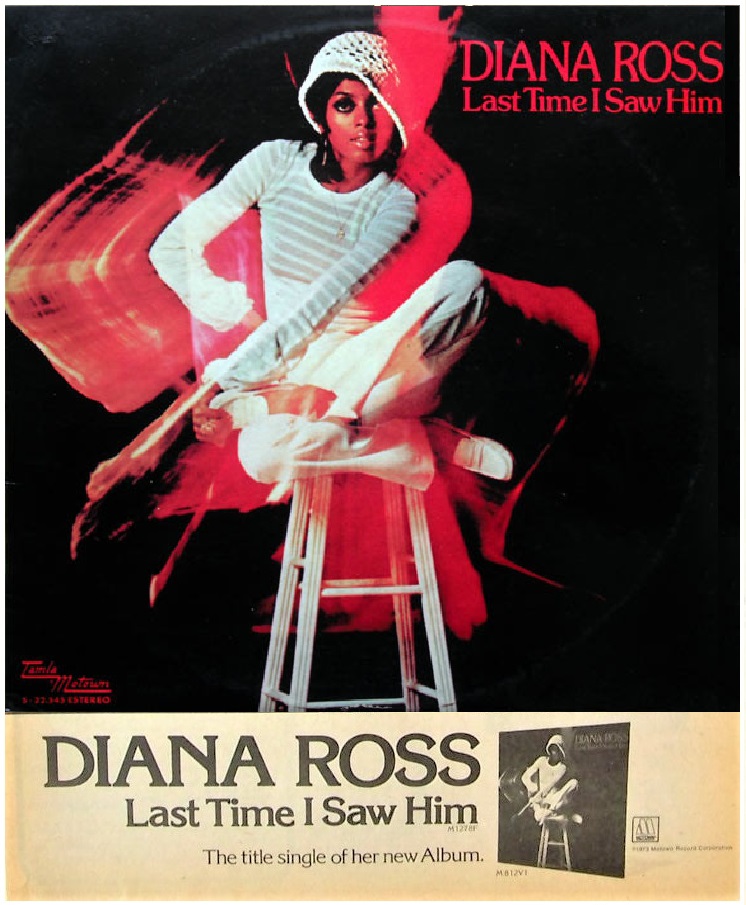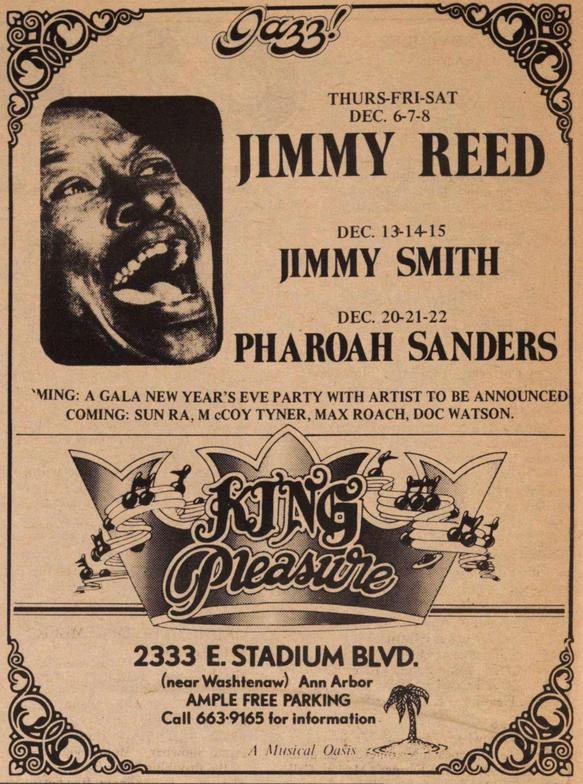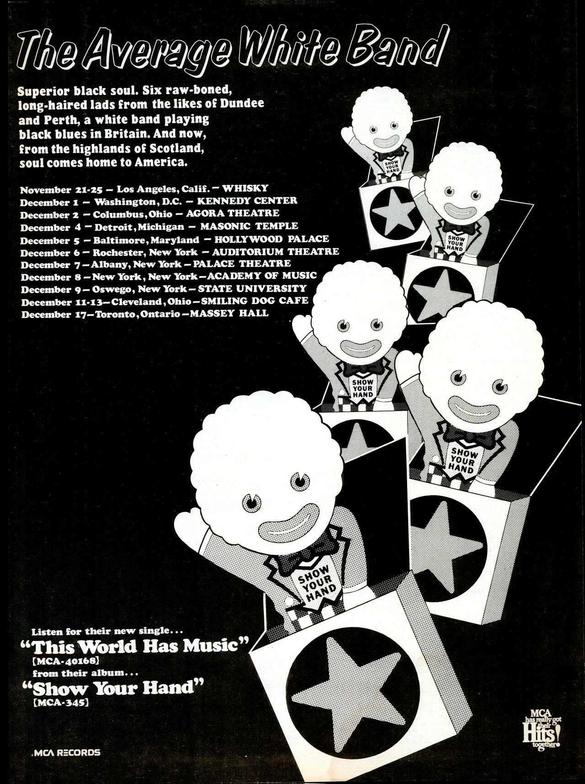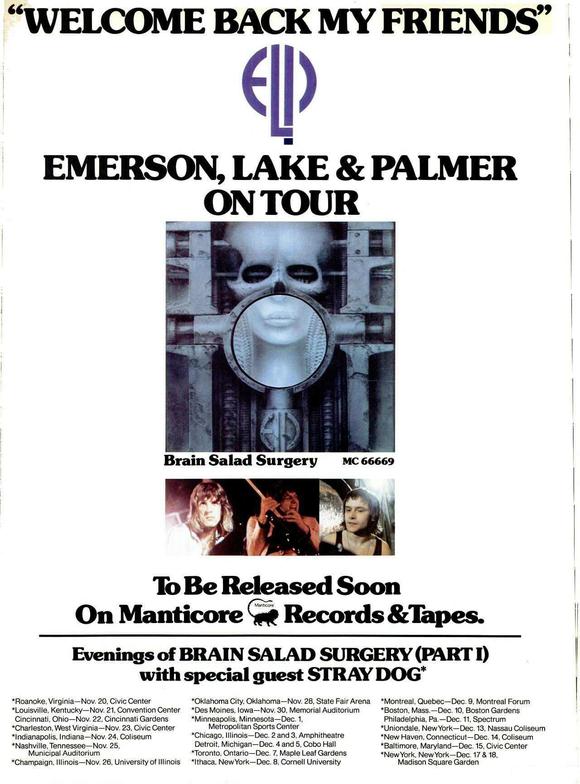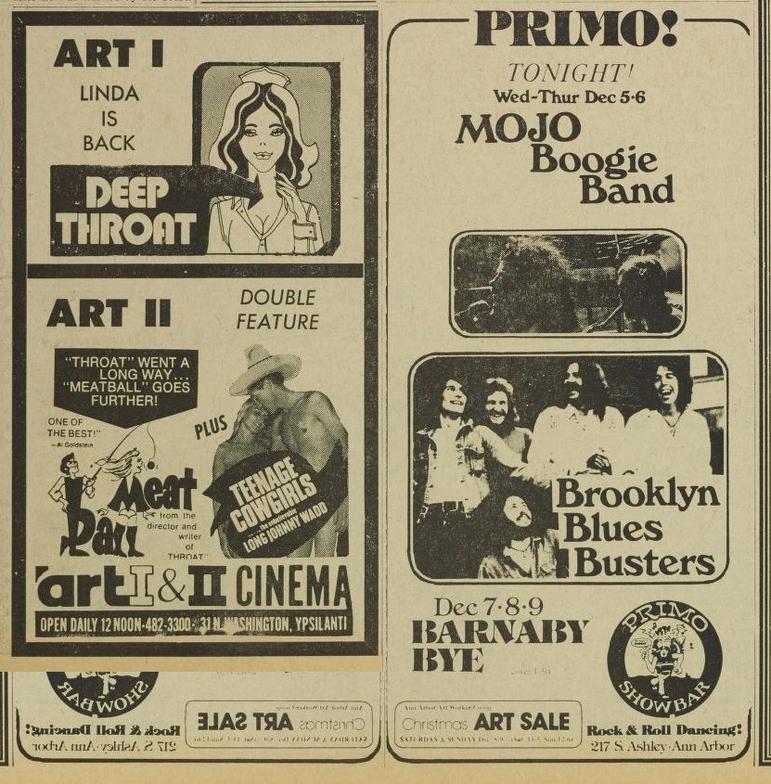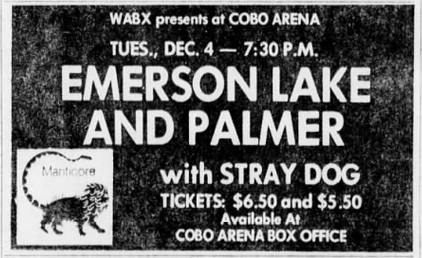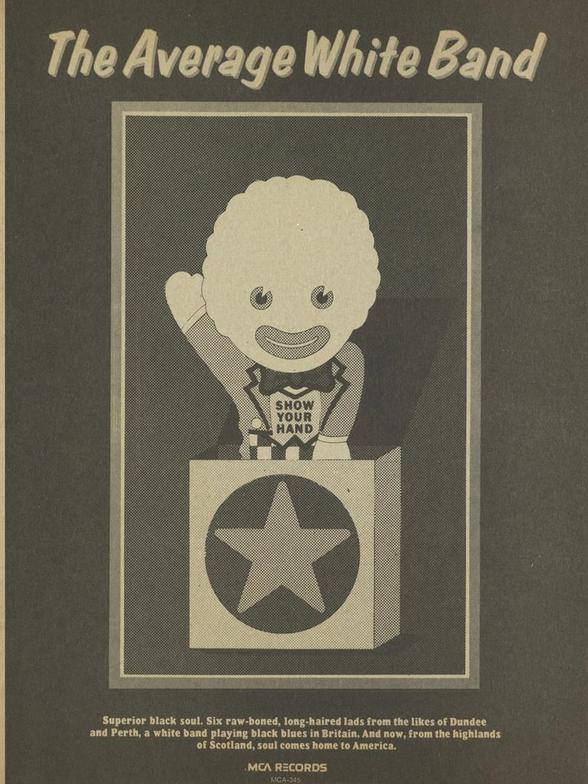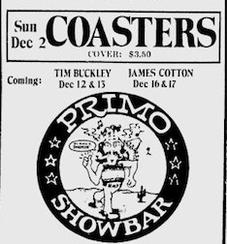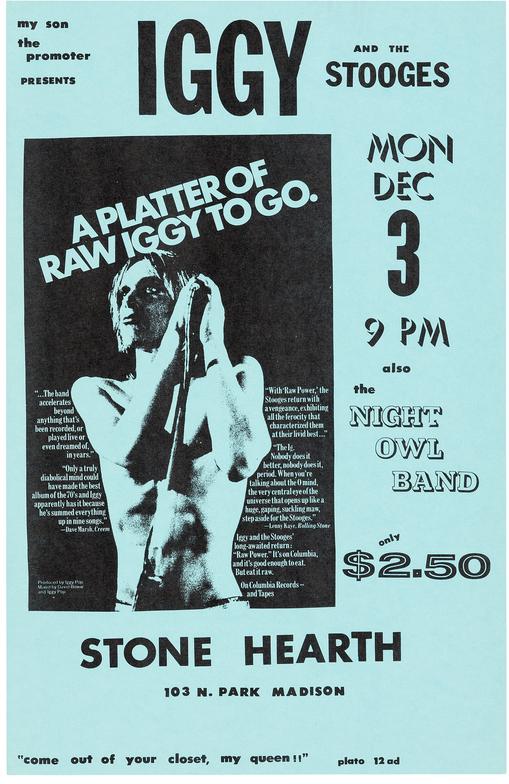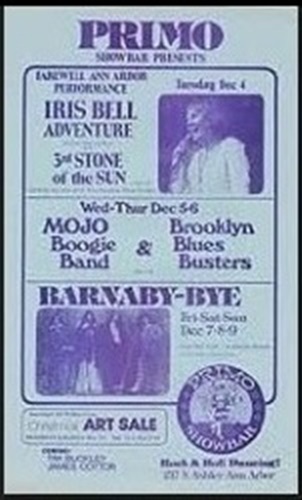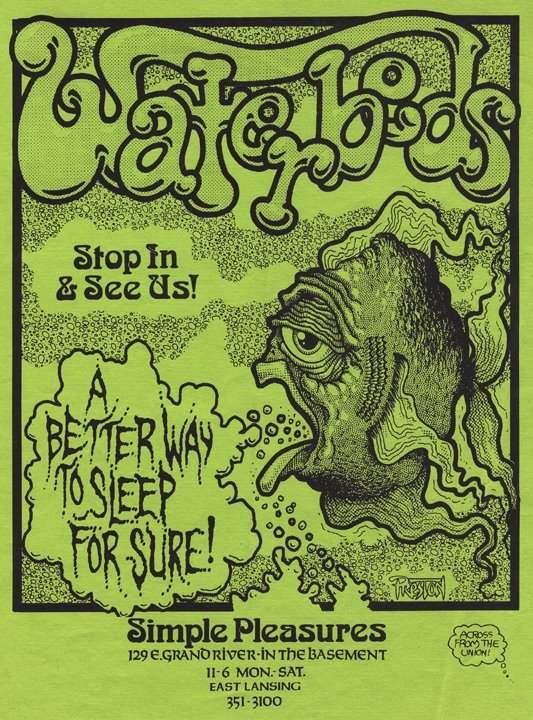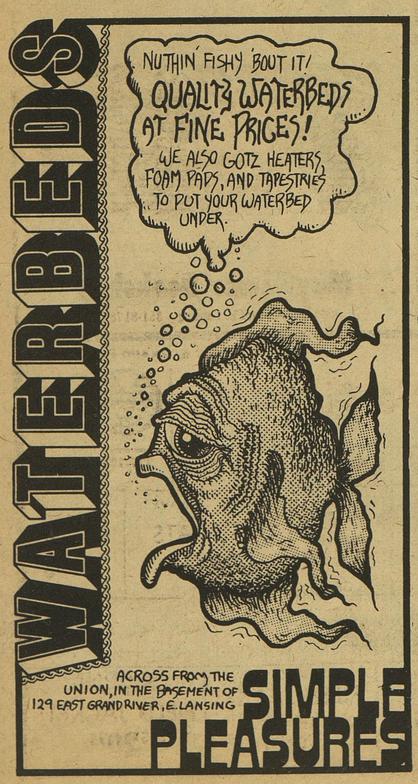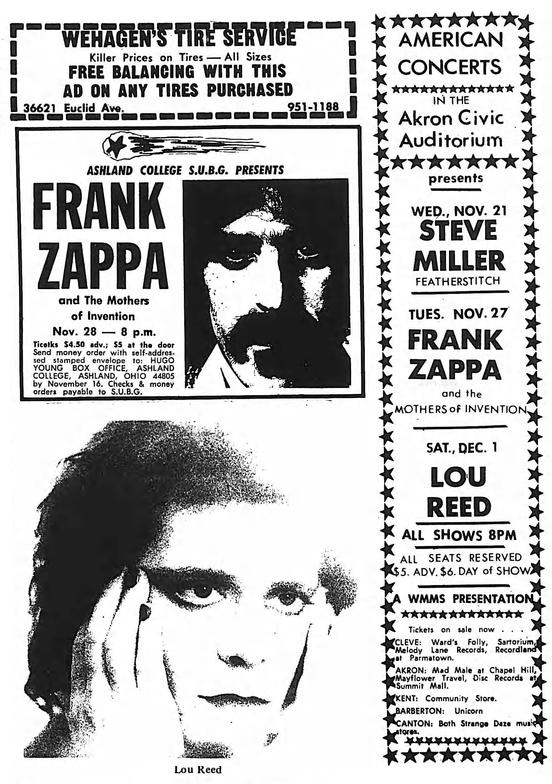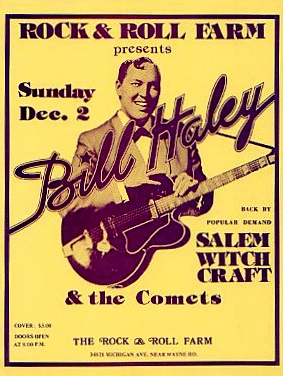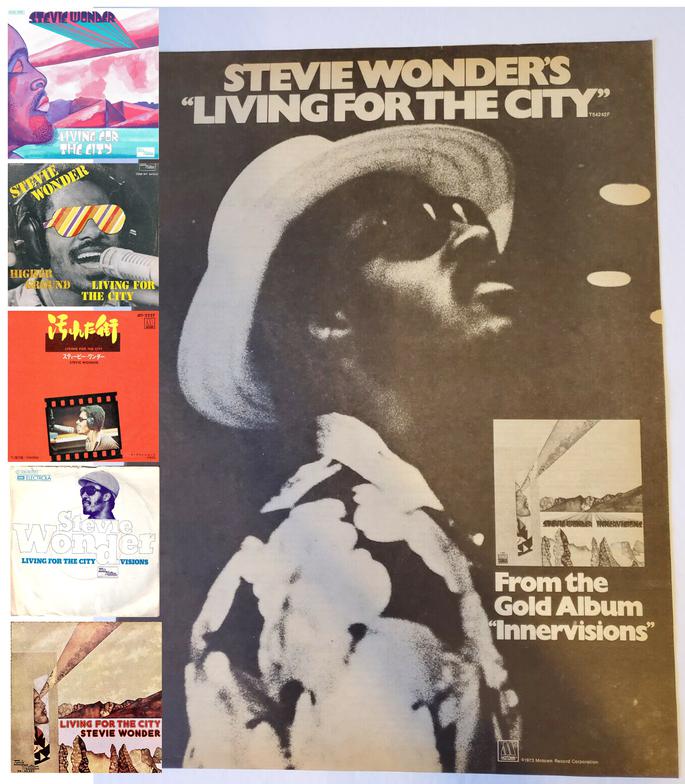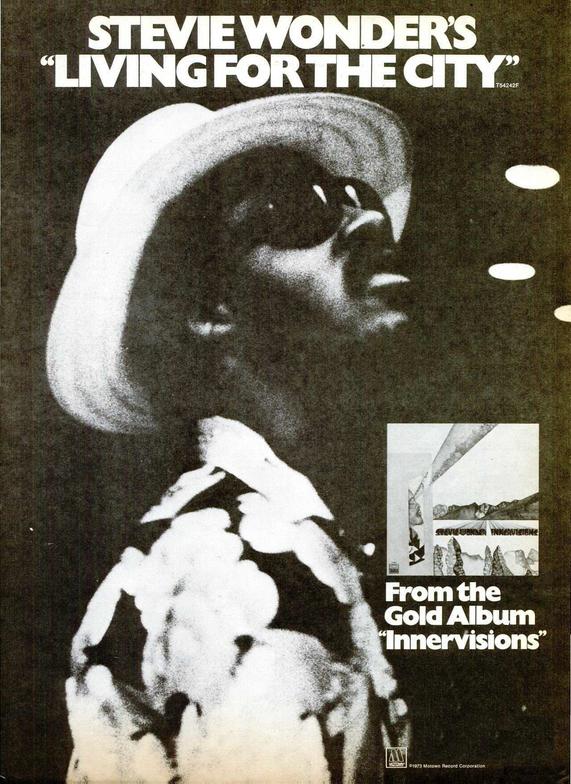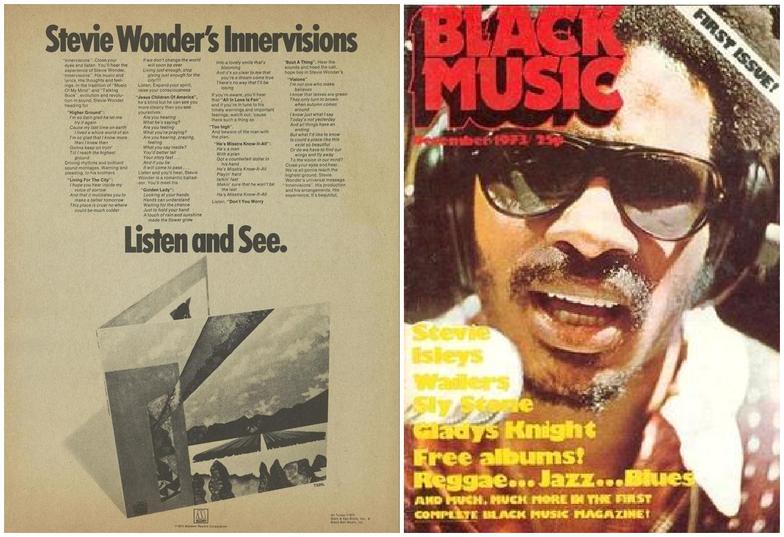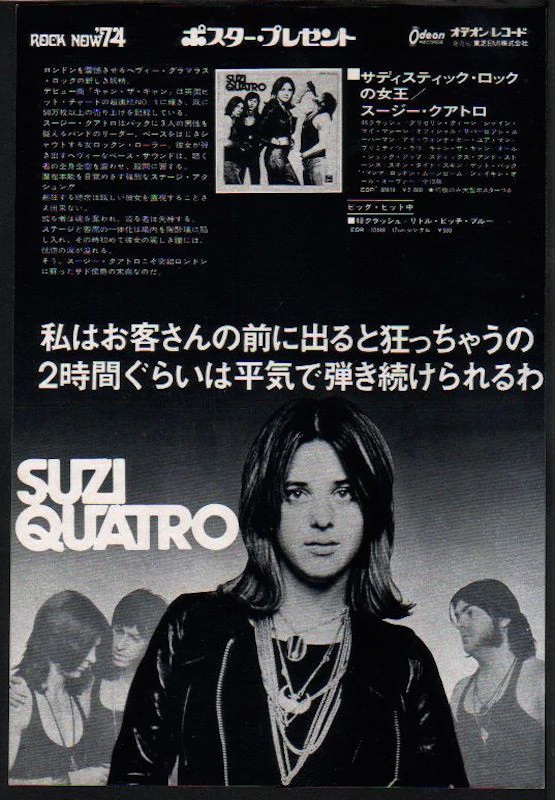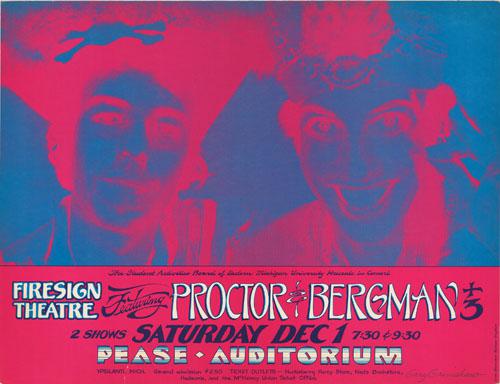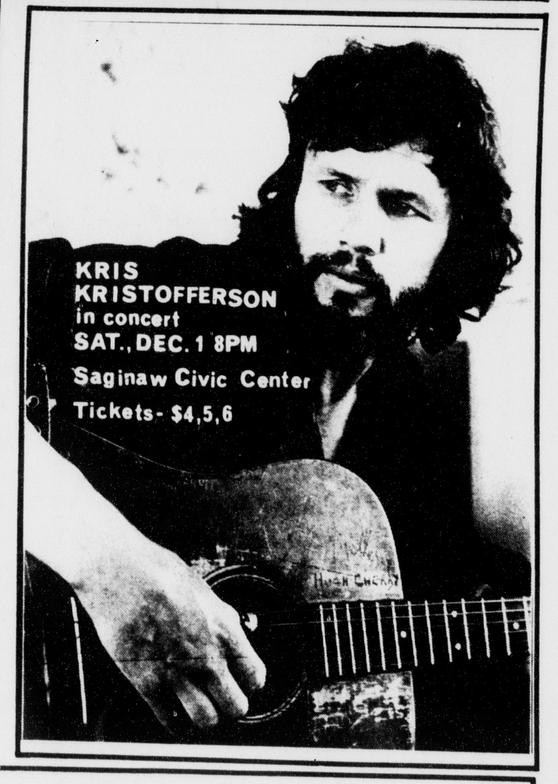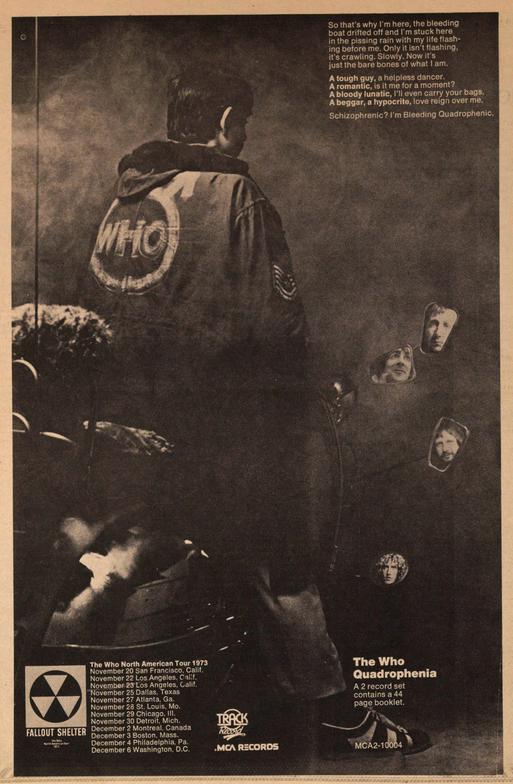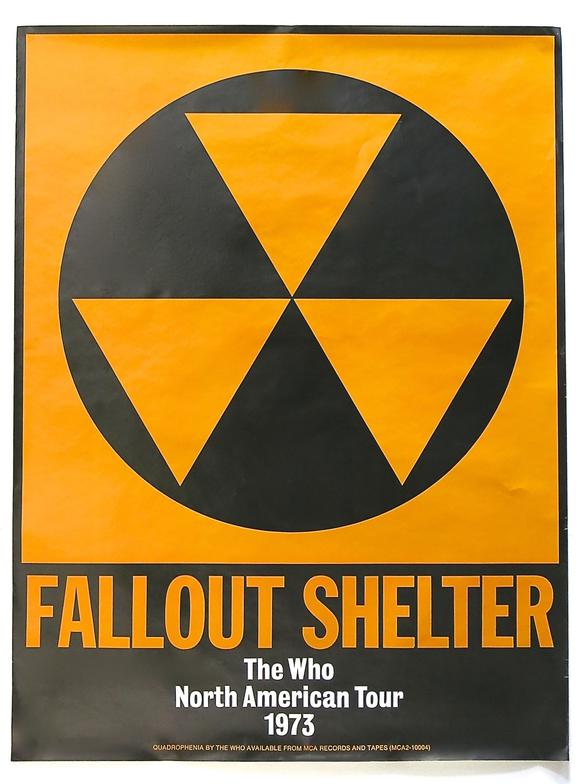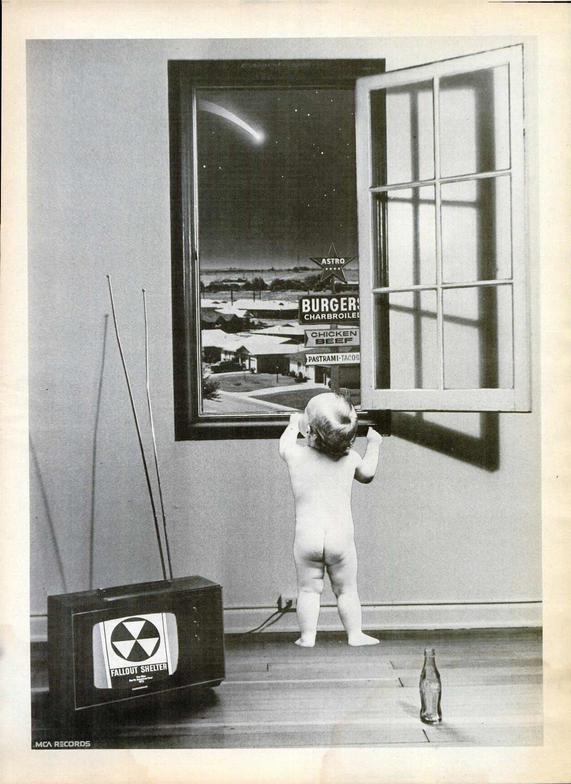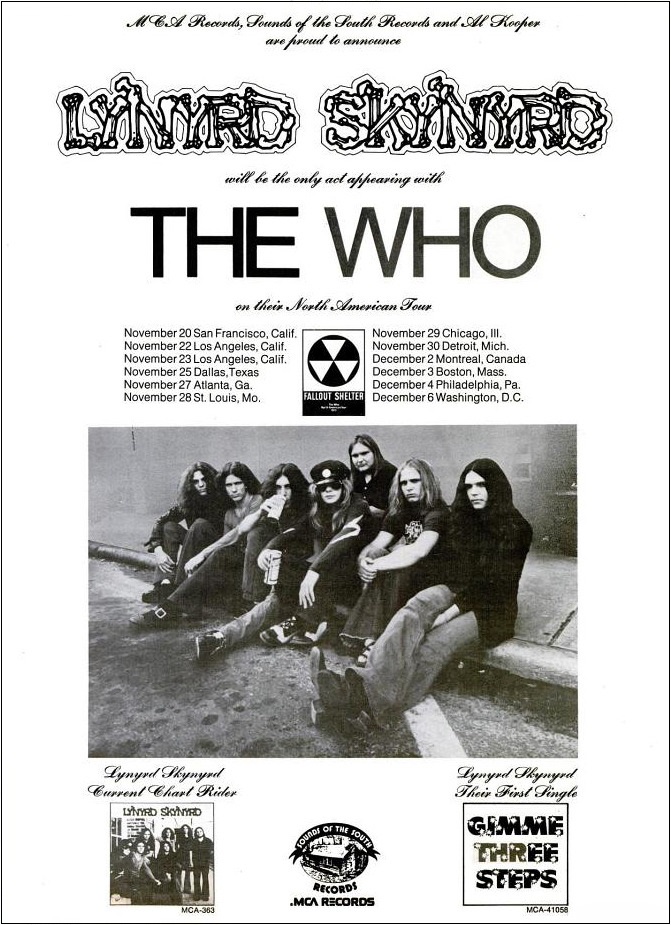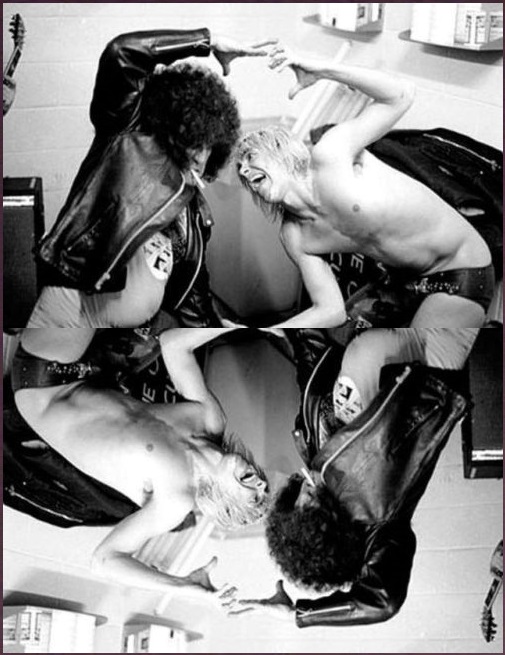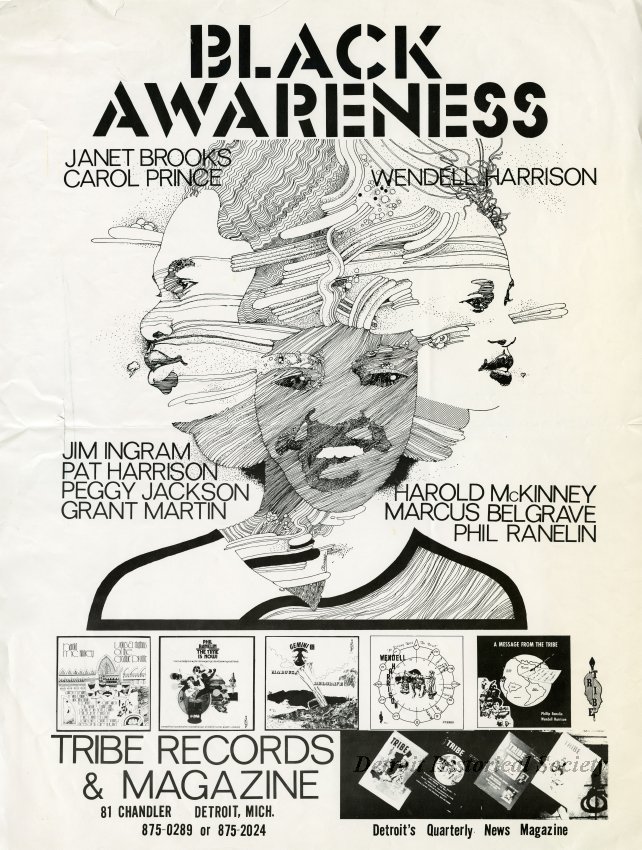Splatt Gallery
Double click here to add text.
Splatt Gallery's History of Michigan Music Posters
Volume Nine - 1973 - Page Seventeen
************************************************************
Record company ad for Genesis with tour date that completely mistakes the Michigan show on December 8, 1973. The ad says “Detroit Eastern University, Pease Auditorium, Detroit”, which should be Eastern Michigan University, Pease Auditorium, Ypsilanti.
This was the band’s third trip to the US, but their first Michigan appearance. The concert database is incorrect in attributing a January 1969 appearance by a band named Genesis at the Grande Ballroom in Detroit to the English group. The Genesis that performed at the Grande was likely the Los Angeles, California band of the same name. The database is probably also incorrect in regards to a second night, at Ford Auditorium in Detroit, two nights later on December 10, 1973, as it does not seem verifiable.
Following the Michigan show, or shows, the band went to Hollywood, California, for fourteen shows at The Roxy, culminating with the filming for the “Midnight Special” TV show at the NBC studio in Burbank, California.
Genesis – Watcher of the Skies (Midnight Special TV 12/20/73)
https://www.youtube.com/watch?v=bETFh4eRdM8
A Globe Poster for a show by the Eagles at the University of Maryland in Baltimore on December 9, 1973. The Eagles had released their second album, “Desperado”, earlier in the year. It was not as commercially successful as their self-titled debut album had been, which had yielded three Top 40 singles, but the title track of the second album, which was never released as a single, became one of their signature songs, and more importantly, it started the song-writing partnership of Don Henley and Glenn Frey.
The Eagles – Desperado (1973)
https://www.youtube.com/watch?v=brhf7IdHZ10
Poster by Mike Brady for Bob Seger at the Rock & Roll Farm in Wayne, Michigan, December 11, 1973, with Salem Witchcraft. Later in the week, Rusty Day & Detroit, and Sunday Funnies back at their old home base. Coming up later in the month are Bloodrock and James Cotton Blues Band.
Gary Grimshaw poster/flyer for a benefit show for the Chicago Conspiracy attorneys with Uprising, Homegrown and Rabbits at the Primo Showbar in Ann Arbor, Michigan on December 11, 1973, and newspaper ad that lists Tim Buckley for the next two nights.
An ad for the Troubadour in Los Angeles, California with Commander Cody & His Lost Planet Airmen appearing December 11-16, 1973.
Following the release of the “Muscle of Love” album, Alice Cooper embarked on one more year-end tour, not much changed from the earlier tour, except for the sailor suits. The show came to the Crisler Arena in Ann Arbor, Michigan, December 12, 1973, with opening band ZZ Top.
Record company ad for ZZ Top with tour dates, including the Crisler Arena in Ann Arbor, Michigan (bottom line in the first column), opening for Alice Cooper, December 12, 1973. It was the Texas band’s second Michigan appearance, the first was five months earlier, opening for Savoy Brown at Ford Auditorium in Detroit, but as our long-time readers may recall, Frank Beard and Dusty Hill had already performed in the state as part of “the Fake Zombies” in 1969.
Poster/flyer by Gary Grimshaw and an ad for the Primo Show Bar in Ann Arbor, Michigan with shows by Tim Buckley on December 12-13, 1973, followed by Short Stuff from Milwaukee, Wisconsin, and James Cotton.
The intentionally mis-spelled Muther’s Music Emporium in Nashville, Tennessee, was one of the few venues to spell the name of the Los Angeles female rock band Birtha correctly, but they blew it on Bob Seger’s name, and the fact that his band had not been the System for two years now. Ted Nugent & the Amboy Dukes appeared on December 13-14, 1973, and Seger followed on the 15th and 16th.
An ad for King Pleasure in Ann Arbor, Michigan, with Jimmy Smith, December 13-15, 1973, followed by Pharoah Sanders and Sun Ra.
Newspaper ad for Funkadelic at the Whisky a Go Go in West Hollywood, California, December 14-16, 1973. The Average White Band from Scotland were on their first US tour. Formed in 1972, the group garnered attention with an opening slot on Eric Clapton’s come-back concert at the Rainbow Theatre in London, England in January 1973. Their first album, released in September 1973, sold poorly, but Clapton’s tour manager Bruce McCaskill liked the band, he got them signed to Atlantic Records and the band moved to Los Angeles. Their second album, released in August 1974, would be a blockbuster.
Record company ad in the December 15, 1973 issue of Billboard magazine, for the “Teenage Lament ‘74” single by Alice Cooper.
Alice Cooper – Teenage Lament ‘74 (1973)
https://www.youtube.com/watch?v=-oYZvzYjkks
A Motown Records ad in the December 15, 1973 issue of Billboard magazine for this funky single from their album “1990”, the last to be produced for them by Norman Whitfield, who had taken them down the path of “psychedelic soul” that started with “Cloud Nine”, Motown’s first Grammy Award, in 1968.
Poster for the movie “Hell Up in Harlem”, released on December 16, 1973, the quick sequel to “Black Caesar” which had been released at the beginning of the year. The soundtrack for “Black Caesar” was scored by James Brown, for the sequel the film’s producers turned to Motown for the musical score by Fonce Mizell and Freddie Perren, two members of the label’s writing and production team known as the Corporation, with Edwin Starr providing the vocals. Funk Brothers’ Dennis Coffey and James Jamerson contributed on guitar and bass respectively.
The soundtrack was released as an Edwin Starr album, his final LP for Motown which may explain its poor promotion. The track “Big Papa”, that AllMusic claimed “should have been a monster”, was released as a single that failed to chart and the track “Easin’ In”, which AllMusic said “has chart buster written all over it”, was never released as a single.
Edwin Starr – Big Papa (1973)
https://www.youtube.com/watch?v=aKojKv7zPVg
Edwin Starr – “Easin’ In (1973)
https://www.youtube.com/watch?v=kOBh4NZ4wZQ
A record store ad with the Dramatics appearing in Cleveland, Ohio on December 16, 1973.
A great poster in a classic “seventies” style for Johnny Winter with Brownsville Station at the Municipal Auditorium in New Orleans, Louisiana, December 19, 1973. It had been a great year for Brownsville Station, with constant touring (no change there) but trimmed to a trio and with a Top Ten hit.
The Blind Pig bar in Ann Arbor, Michigan started its own record label with a single release from The Vipers, the band that featured Steve Nardella, George Beddard, Sarah Brown, and Fran Christina. The first side was a cover of a Wynonie Harris song and the flip-side was an original song. They were also working on an animated film called “Huron River Drive”, animated by Chris Frayne (Ozone).
The Vipers – Huron River Drive (1973)
https://www.youtube.com/watch?v=xoTrAuuqxTU
Ad for Blind Pig Records and The Vipers’ new single, illustrated by Chris Frayne (Ozone).
When we last left Dick Wagner, he had been given the assignment from Lou Reed to assemble a touring group for the “Berlin” album tour. Of course, he picked Steve Hunter, Reed had famously remarked that the Detroit with Mitch Ryder’s version of “Rock and Roll” was the definitive version of the song, primarily due to Hunter’s guitar, and Hunter had participated in the “Berlin” recording sessions, like Wagner, brought in by producer Bob Ezrin.
For the rhythm section, Wagner recruited drummer Pentti “Whitey” Glan and bassist Peter Walsh. Glan had been the drummer for the Canadian band Bush, which had evolved from the band Mandala, which actually went even further back to Toronto’s The Rouges which included Glan from the start. Rounding out the band was Ray Colcord on keyboards, he became a well-known film and TV composer, but he can be heard on at least one other album; “American Pie” by Don McLean.
The band played one show in Lennox, Massachusetts where they had been rehearsing, then they set off for a tour of the UK and Europe that began September 9, 1973. Somewhere near the end of European leg of the tour, Peter Walsh was replaced by bassist Prakash John. John was also from Toronto and had also been in the band Bush with drummer Glan, and had joined Parliament Funkadelic after Bush broke up.
Plans were made to record the show at the Academy of Music in New York City, December 21, 1973. Five of the tracks were released as the “Rock n Roll Animal” album in February 1974, and six other tracks were released on “Lou Reed Live” in 1975.
Lou Reed – Rock n Roll Animal (1974)
https://www.youtube.com/watch?v=sJYu9Rl_23Y
Here is some of the only live footage of the band, shot at the L’Olympia in Paris, France, September 17, 1973, unfortunately before Prakash John was in the band. His bass playing was the element that really put the spark and roll into the band, as you can hear on the record, and as evidenced by the fact that the core four of Wagner, Hunter, Glan, and John continued on, next with Alice Cooper’s “Welcome to My Nightmare” tour.
Lou Reed – Live at L’Olympia, Paris, France (9/17/73)
https://www.youtube.com/watch?v=oiPofrInq_4
Volume Nine - 1973 - continues - HERE
An ad for the Primo Showbar in Ann Arbor, Michigan, with Shortstuff, December 14-15, 1973, and James Cotton (with Gary Grimshaw lettering), December 16-17.
Illustration by Chris Frayne (Ozone) for a centerfold story in the December 20, 1973 issue of the Door newspaper in San Diego, California that trace the band history of Commander Cody & His Lost Planet Airmen back to the band The Amblers in 1962, and included the Fantastic Surfing Beavers (1964-1966), the Seventh Seal, and Billy C. & the Sunshine.
An ad for the King Pleasure jazz club in Ann Arbor, Michigan, with Pharoah Sanders appearing December20-22, 1973, and with Sun Ra ending the year.
A full-page Motown Records ad for the Temptations’ 18th studio album, called “1990”, released on December 7, 1973. It would be their final album with producer Norman Whitfield, who had pioneered the “psychedelic soul” genre with the Temptations’ 1969 album “Cloud Nine”. Over the course of the next six albums, Whitfield’s production, with long instrumental sections, tended to overshadow the Temptations’ vocal contributions, to the point where the group’s complaints finally led Berry Gordy to replace Whitfield with Jeffrey Bowen as the Temptations’ producer for their next album, 1975’s “A Song for You”.
Whitfield left Motown shortly after that to start his own label, called Whitfield Records, which would release several hits by the band Rose Royce. Whitfield had already worked with the group before they became known as Rose Royce, in fact they were used as the backing group for the single from the “1990” album, “Let Your Hair Down”, which became the Temptations final #1 R&B single to be produced by Whitfield.
The Temptations – Let Your Hair Down (1973)
https://www.youtube.com/watch?v=lwlCyYdqUF8
Poster by an unrecognized artist with Iggy & the Stooges opening for the J. Geils Band and Spooky Tooth in Jacksonville, Florida on December 7, 1973.
An ad for the first two weeks of December 1973 at the Primo Showbar in Ann Arbor, Michigan, including the only known Michigan appearance by the Long Island, New York band Barnaby Bye, December 7-9, 1973.
Barnaby Bye – Blonde (1973)
https://www.youtube.com/watch?v=jaImRGrR4Fc
Poster/ad by an unknown artist for the Steve Miller Band’s third Michigan show in three weeks, this one at the Finch Fieldhouse in Mount Pleasant, Michigan, December 7, 1973.
Another ad for the Steve Miller Band with Return To Forever at the Finch Fieldhouse in Mount Pleasant, Michigan, December 7, 1973.
Probably the most far-out Gary Grimshaw poster (in terms of geography) from Bogata, Columbia in South America with Canned Heat and the Chambers Bros., December 7, 1973. There has to be a story behind this one.
Poster by an unknown artist for Dizzy Gillespie (mis-spelled) at The Abstention at Oakland University in Rochester, Michigan, December 6, 1973. It was close to the 200th Michigan show by the Be-Bop trumpeter, going back to 1944. After a five-year absence from the state, Gillespie performed at the Clarenceville High School in Livonia, Michigan in January 1973. Following this show at Oakland University, Gillespie performed at the Detroit Music Hall the next night, December 7th.
A pair of ads with Mike Quatro opening for Brian Auger at Akron University in Akron, Ohio on December 6, 1973.
Motown Records ad for the sixth studio album by Diana Ross, released on December 6, 1973.
An ad for the King Pleasure jazz club in Ann Arbor, Michigan, with a quite-pleased Jimmy Reed appearing December 6-8, 1973.
Record company ad for The Average White Band from Scotland, with their first Michigan appearance at the Masonic Temple in Detroit, December 4, 1973. They opened for B.B. King and ELO.
Record company ad for Emerson, Lake & Palmer, their own newly-formed record label, Manticore, with tour dates including two shows at Cobo Hall in Detroit, Michigan, December 4-5, 1973. The support act was Stray Dog, a band from Texas, also a recent signing to Manticore Records. The album cover art for ELP’s new album was the first to use of the work of H. R. Giger, a Swiss poster maker since 1969.
An ad for the Primo Showbar in Ann Arbor, Michigan with the Mojo Boogie Band and Brooklyn Blues Busters appearing December 5-6, 1973. Upcoming events include Barnaby Bye for three nights and a Christmas Art Sale, also shown are the current ads for the Art I & II Cinema theaters in Ypsilanti.
Newspaper ad for Emerson, Lake & Palmer with Stray Dog at Cobo Arena in Detroit, Michigan on December 4, 1973.
"The other night we painted posters
We played some records by the Coasters"
- Frank Zappa (Status Back Baby)
Newspaper ad for an appearance by The Coasters at the Primo Showbar in Ann Arbor, Michigan, December 2, 1973. One of the original R&B groups, The Coasters first Michigan appearances were as part of Mickey Shorr’s Rock n’ Roll shows in 1957, more recently they had performed five nights at the Michigan Palace in 1972 while it was still a jazz supper club before Dr. Leo Speer acquired it and turned it into a rock and roll palace.
The Coasters’ first single, a hit in 1956 called “Down in Mexico” was re-recorded in 1973, and it was this later version that was used by Quentin Tarantino in his 2007 movie “Death Proof”.
The Coasters – Down in Mexico (re-recording) (1973)
https://www.youtube.com/watch?v=-_fZDvxpXEI
A poster/flyer for Iggy & the Stooges in Madison, Wisconsin on December 3, 1973, a show that was likely cancelled as it does not appear on any known timeline.
Poster/flyer by Gary Grimshaw for Iris Bell at the Primo Showbar in Ann Arbor, Michigan on December 4, 1973.
Poster and newspaper ad by Dennis Preston for the Simple Pleasures waterbed store in East Lansing, Michigan that uses the same fish as in Preston’s ad in the Joint Issue newspaper on December 1, 1973.
An ad for Lou Reed at the Akron Civic Auditorium in Akron, Ohio on December 1, 1973, the first US show with the “Rock n Roll Animal” band of Steve Hunter and Dick Wagner on guitars, Ray Colcord on keyboards, Prakash John on bass, and Pentti (Whitey) Glan on drums.
In an interview that accompanied the above photo, Reed suggested that his next album might be called “Rock and Roll Animal”. The live tracks that became that album would be recorded three weeks later at the Academy of Music in New York City.
Poster by an unknown artist for Bill Haley & the Comets with Salem Witchcraft at the Rock & Roll Farm in Wayne, Michigan, December 2, 1973.
A full-page Motown Records ad and picture sleeves from around the world for the single “Living For The City” by Stevie Wonder, released in November 1973. It was Wonder’s fourth #1 hit on the Billboard R&B chart, and his seventh Hot 100 Top Ten.
Stevie Wonder on the cover of the premier issue of the British music magazine Black Music, December 1973, along with a full-page ad for the album “Innervisions”.
Poster/ad promoting Suzi Quatro’s debut album in Japan in December 1973.
Another of most favorite Gary Grimshaw posters, for Proctor & Bergman at Pease Auditorium in Ypsilanti, Michigan, December 1, 1973.
Newspaper ad for Kris Kristofferson in Saginaw, Michigan, December 1, 1973.
Full-page record company ads for the “Quadrophenia” album by The Who, with tour dates including a stop at Cobo Arena in Detroit, Michigan, November 30, 1973.
Tour logo poster for the “Quadrophenia” tour by The Who, at Cobo Arena in Detroit, Michigan, November 30, 1973. This was The Who’s 13th show in Michigan, going back to 1967.
Interesting second record company poster for the “Quadrophenia” tour by The Who, at Cobo Arena in Detroit, Michigan, November 30, 1973.
Record company ad for the band Lynyrd Skynyrd, with tour dates opening for The Who including a stop at Cobo Arena in Detroit, Michigan, November 30, 1973.
No, your eyes do not deceive you, that is indeed Handsome Dick Manitoba cavorting backstage with Iggy, other photos and stories also support a show at Prince George’s Community College in Largo, Maryland, with the Dictators, Iggy & the Stooges, and Blue Oyster Cult in November 1973.
It was the very first public show by the Dictators from NYC, so we’ll take their account, as written by Sal Cincotta:
“On November 30, 1973, the Dictators played their very first gig, in the gym at Prince George’s Community College in Largo, Maryland. They were the opening act for Blue Oyster Cult and Iggy + the Stooges. With the ink still wet on their freshly signed contract with Epic, Andy, Ross, Scott, and Stu-Boy, with pre-Handsome Dick Richie Blum in tow, drove the 4 hours south to what they thought would be stop one on the road to stardom.
“It would be almost mythic if they had a fantastic gig, were overwhelmed by applause, got props from the other 2 bands, and were rewarded royally for their efforts. Unfortunately, not everyone can be Bobo Holloman and throw a no-hitter in his first start. With their musical chops still in the embryonic stage, they were sparsely rewarded with golf applause from the tolerant audience. Mostly, they were ignored. So, less than an hour later, with all the money from the gig going straight to their managers, they made the trip home. Much like a teenager’s first attempt at sex, it was over before they knew it, and they wondered what the hell just happened.
“No one in the band remembers the exact date, and the librarians at Prince George’s CC, while enormously helpful, could only narrow it down to a Friday in November 1973. There were 5 Fridays that month — 11/2, 11/9, 11/16, 11/23, and 11/30. BOC had gigs in other cities on 11/9 and 11/16, so those dates are ruled out. 11/23 was the day after Thanksgiving. The campus would have been a ghost town, so it’s unlikely there was a concert scheduled that night. So, by process of elimination, our boys made their debut either 11/2/73, or 11/30/73. We’re going with 11/30 until proven wrong, and we’re not waiting underwater for that to happen.”
A poster for Tribe Records & Magazine, circa December 1973.


